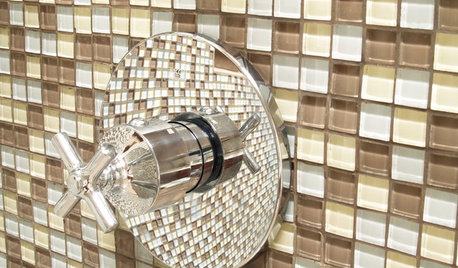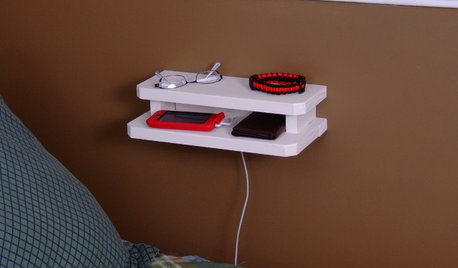PEX and Connector Fittings
GreenDog194
12 years ago
Related Stories

BATHROOM DESIGNConvert Your Tub Space to a Shower — the Fixtures-Shopping Phase
Step 2 in swapping your tub for a sleek new shower: Determine your mechanical needs and buy quality fixtures
Full Story
LIGHTINGA Beginner’s Guide to Lighting in Layers
Discover the secrets of combining light sources to create richer-looking and more flexible living spaces
Full Story
HOUZZ TOURSMy Houzz: An 1874 Cabin Completes a Rustic Oregon Home
It took 10 years and a hand-hewn log cabin to build this labor of love. See the results of one couple's patience and vision
Full Story
DIY PROJECTSNeat Little Project: Make a Mini Wooden Wall Console
Use this handy holder by a bed or desk for eyeglasses or jewelry, or as a convenient charging station
Full Story
FURNITUREModern Icons: Sori Yanagi's Butterfly Stool
Rooms take flight with the organic beauty of this sculptural midcentury modern seat
Full Story
FLOORSWhat to Ask When Considering Heated Floors
These questions can help you decide if radiant floor heating is right for you — and what your options are
Full Story
FURNITUREWhat to Know Before You Buy a Sectional
Learn about sizes, arm setups, seat types and more to get the right sectional for your space
Full Story
FLOORSFloors Warm Up to Radiant Heat
Toasty toes and money saved are just two benefits of radiant heat under your concrete, wood or tile floors
Full Story
FLOORSIs Radiant Heating or Cooling Right for You?
Questions to ask before you go for one of these temperature systems in your floors or walls (yes, walls)
Full Story
GREAT HOME PROJECTSHow to Add a Radiant Heat System
Enjoy comfy, consistent temperatures and maybe even energy savings with hydronic heating and cooling
Full StoryMore Discussions







lazypup
GreenDog194Original Author
Related Professionals
Springdale Handyman · Channahon Handyman · Shamong Kitchen & Bathroom Remodelers · Athens Kitchen & Bathroom Remodelers · Clovis Kitchen & Bathroom Remodelers · Deerfield Beach Kitchen & Bathroom Remodelers · Emeryville Kitchen & Bathroom Remodelers · Glendale Kitchen & Bathroom Remodelers · Overland Park Kitchen & Bathroom Remodelers · South Lake Tahoe Kitchen & Bathroom Remodelers · Spokane Kitchen & Bathroom Remodelers · Thonotosassa Kitchen & Bathroom Remodelers · Toledo Kitchen & Bathroom Remodelers · Middlesex Kitchen & Bathroom Remodelers · South Jordan Kitchen & Bathroom Remodelerslazypup
User
GreenDog194Original Author
User
lazypup
GreenDog194Original Author
User
lazypup
brickeyee
SparklingWater
brickeyee
GreenDog194Original Author